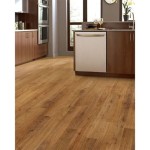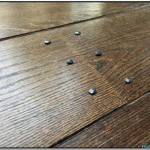Tools Needed To Install Wood Flooring
Installing wood flooring is a project that can significantly enhance the aesthetic appeal and value of a property. While professional installation is always an option, many homeowners choose to undertake this task themselves. However, a successful wood floor installation relies heavily on having the right tools. Utilizing the appropriate tools not only streamlines the process but also contributes to a durable and visually pleasing finished product. This article details the essential tools required for installing wood flooring, outlining their purpose and proper usage.
Preparation and Subfloor Assessment Tools
Before any flooring is installed, thorough preparation of the subfloor is crucial. The subfloor must be clean, level, and structurally sound to ensure a stable foundation for the new wood flooring. This preparation phase requires specific tools designed to assess and address any deficiencies.
Moisture Meter: Wood flooring is susceptible to moisture damage. Excessive moisture in the subfloor can cause the wood to warp, buckle, or develop mold. A moisture meter is an indispensable tool for measuring the moisture content of the subfloor. Different types of moisture meters are available, including pin-type and pinless meters. Pin-type meters require inserting probes into the subfloor, while pinless meters use electromagnetic waves to detect moisture levels without penetrating the surface. It is essential to verify that the moisture content of the subfloor is within the manufacturer's recommended range before proceeding with installation.
Level: Ensuring a level subfloor is paramount for a smooth and even wood floor installation. A level is used to identify any high or low spots on the subfloor. Several types of levels are available, including spirit levels, laser levels, and digital levels. For smaller areas, a basic spirit level may suffice. However, for larger areas, a laser level or digital level provides greater accuracy and efficiency. Any significant deviations from level must be addressed before installing the flooring.
Straightedge: A straightedge, typically a long metal or wooden ruler, is used in conjunction with the level to identify uneven areas in the subfloor. By placing the straightedge on the subfloor and using the level to check for gaps or inconsistencies, one can pinpoint areas that require correction. A straightedge is vital for detecting subtle variations in the subfloor’s surface that may not be immediately apparent.
Subfloor Cleaner and Scraper: A clean subfloor is essential for proper adhesion of underlayment or flooring. Debris, adhesives, and other contaminants can interfere with the bonding process and compromise the integrity of the flooring installation. A subfloor cleaner, appropriate for the subfloor material, is used to remove dirt and grime. A scraper, with a sharp blade, removes stubborn adhesives, paint, or other materials that are adhered to the subfloor. Ensuring a clean surface promotes optimal adhesion and contributes to a longer-lasting flooring installation.
Self-Leveling Compound: If the subfloor exhibits significant unevenness, a self-leveling compound may be required. This compound is a liquid mixture that is poured onto the subfloor and spreads to create a smooth, level surface. A self-leveling compound applicator, such as a gauge rake or notched squeegee, is used to distribute the compound evenly across the subfloor. The manufacturer's instructions must be followed meticulously to ensure proper application and curing of the compound.
Cutting and Installation Tools
The installation phase requires tools to accurately cut the wood flooring planks or tiles to fit the dimensions of the room and to securely fasten the flooring to the subfloor. Precision and accuracy are crucial during this phase to achieve a professional-looking and durable result.
Measuring Tape: Accurate measurements are fundamental for a successful wood floor installation. A measuring tape, ideally a long and durable one, is used to determine the dimensions of the room, the length of the flooring planks needed, and the spacing between rows. It is essential to measure precisely and consistently to avoid gaps or inconsistencies in the flooring layout. High-quality measuring tapes usually come with robust housing and locking mechanisms for accurate readings.
Pencil and Chalk Line: A pencil is used to mark cutting lines on the flooring planks. A chalk line is a tool that creates a straight line on the subfloor to serve as a guide for laying the flooring. It consists of a container filled with chalk dust and a string that is coated with chalk. The string is stretched across the subfloor and snapped to create a visible chalk line. This is especially useful for laying the first row of flooring and ensuring that it is perfectly straight.
Miter Saw: A miter saw is essential for making precise angle cuts on wood flooring planks, particularly when installing flooring around corners or near walls that are not perfectly square. A power miter saw offers greater accuracy and efficiency than a hand saw. A compound miter saw can make both angle cuts and bevel cuts. Choosing the right blade with the appropriate tooth count is necessary for cutting wood flooring cleanly and efficiently.
Table Saw: A table saw is useful for ripping flooring planks, which means cutting them lengthwise. This is often necessary when installing flooring along walls that are not perfectly parallel or when fitting flooring around obstacles. A table saw provides a stable platform and allows for accurate and consistent cuts. Safety precautions, such as wearing safety glasses and using push sticks, are essential when operating a table saw.
Jigsaw: A jigsaw is a versatile tool that can be used for making curved or intricate cuts in wood flooring. This is useful for fitting flooring around pipes, doorways, or other irregular shapes. A jigsaw with variable speed settings and a sharp blade designed for cutting wood is recommended. Jigsaws are more maneuverable but usually less accurate than a miter saw or table saw for straight cuts.
Tapping Block and Pull Bar: When installing wood flooring, especially tongue-and-groove flooring, a tapping block and pull bar are used to ensure a tight fit between the planks. The tapping block is placed against the edge of the plank, and a hammer is used to tap the block, driving the plank into place. The pull bar is used to pull the last row of planks tight against the wall. Using these tools prevents damage to the flooring planks and ensures a uniform and secure fit.
Hammer and Nail Set: Depending on the type of wood flooring and the installation method, a hammer and nail set may be required. This is primarily used for installing solid hardwood flooring using the nail-down method. The hammer drives the nails into the flooring, and the nail set is used to countersink the nails, ensuring that they are flush with the surface of the flooring. An alternative to manual nailing is using a Pneumatic nailer or stapler, which offers increased speed and precision.
Spacers: Spacers are small pieces of wood or plastic that are placed between the flooring planks and the walls during installation. These spacers create an expansion gap, which allows the flooring to expand and contract with changes in temperature and humidity. Without expansion gaps, the flooring can buckle or warp. The manufacturer's recommendations should be followed regarding the size and placement of the spacers.
Adhesive and Fastening Tools
Some wood flooring installations require the use of adhesives or fasteners to secure the flooring to the subfloor. The type of adhesive or fastener used depends on the type of flooring and the subfloor material.
Trowel: When using adhesive to install wood flooring, a trowel is used to apply the adhesive evenly to the subfloor. The trowel has notches that control the thickness of the adhesive layer. The correct type of trowel, with the appropriate notch size and shape, is essential for ensuring proper adhesive coverage and bonding. The adhesive manufacturer's instructions should be followed carefully regarding the type of trowel to use and the application technique.
Adhesive Applicator: In some cases, a specific adhesive applicator may be used, which is designed to dispense the adhesive in a controlled manner. This can be particularly useful for installing engineered wood flooring or other types of flooring that require a thin and even layer of adhesive. These applicators often come with adjustable settings to control the flow rate of the adhesive.
Floor Nailer or Stapler: For nail-down installations, a floor nailer or stapler is used to drive nails or staples into the flooring at a consistent angle and depth. These tools are powered by compressed air and offer greater speed and precision than manual nailing. A floor nailer or stapler is essential for installing solid hardwood flooring quickly and efficiently.
Compressor: If using a pneumatic nailer or stapler, an air compressor is needed to provide the compressed air. The compressor should have sufficient capacity to power the tool and maintain a consistent air pressure. A regulator is used to adjust the air pressure to the recommended level for the specific tool and flooring material.
Safety and Cleanup Tools
Safety is paramount when undertaking any construction project. Essential safety equipment protects the installer from potential hazards. Cleanup tools are necessary for maintaining a clean and organized work environment and for removing debris after the installation is complete.
Safety Glasses: Safety glasses are essential for protecting the eyes from flying debris and dust during cutting, sanding, and nailing. Safety glasses should be worn at all times when working with power tools or handling flooring materials.
Hearing Protection: Power tools can generate high levels of noise that can damage hearing. Hearing protection, such as earplugs or earmuffs, helps to reduce the noise level and prevent hearing loss. Hearing protection is particularly important when using miter saws, table saws, or pneumatic tools.
Dust Mask or Respirator: Cutting and sanding wood flooring can generate a significant amount of dust, which can be harmful to the respiratory system. A dust mask or respirator filters out the dust particles and prevents them from being inhaled. A respirator is recommended for individuals with respiratory sensitivities or for projects that generate a large amount of dust.
Broom and Vacuum: A broom is used to sweep up debris and dust from the subfloor and the surrounding area. A vacuum cleaner, preferably one with a HEPA filter, is used to remove fine dust particles that the broom may miss. Maintaining a clean work environment reduces the risk of accidents and ensures a better final result.
Clean-Up Cloths and Solvent: Clean-up cloths are essential when using adhesives and other compounds that can leave a residue on the subfloor or flooring. Spills or excess adhesives should be cleaned up immediately with the appropriate solvent. Following the manufacturers recommendations is crucial in determining the correct solvent to use.

5 Tools For Engineered Wood Flooring Tile Mountain

Installing Hardwood Flooring For The First Time How To Install Wood Floors

How To Install Wood Flooring Lowe S

How To Install Laminate Flooring S W Collins

How To Install Wood Flooring Lowe S

How To Install Hardwood Flooring The Home Depot

Wood Installation Tools

How To Install An Engineered Hardwood Floor

Essential Tools Hardwood Flooring Installers Should Have On Hand

Is Nail Down Installation The Best Unique Wood Floor
Related Posts








